The Spanish revival trend will add instant charm to any style of home – this is how designers create the look
The Spanish revival trend is having, well, a revival! Here's everything you need to know about this interior design style
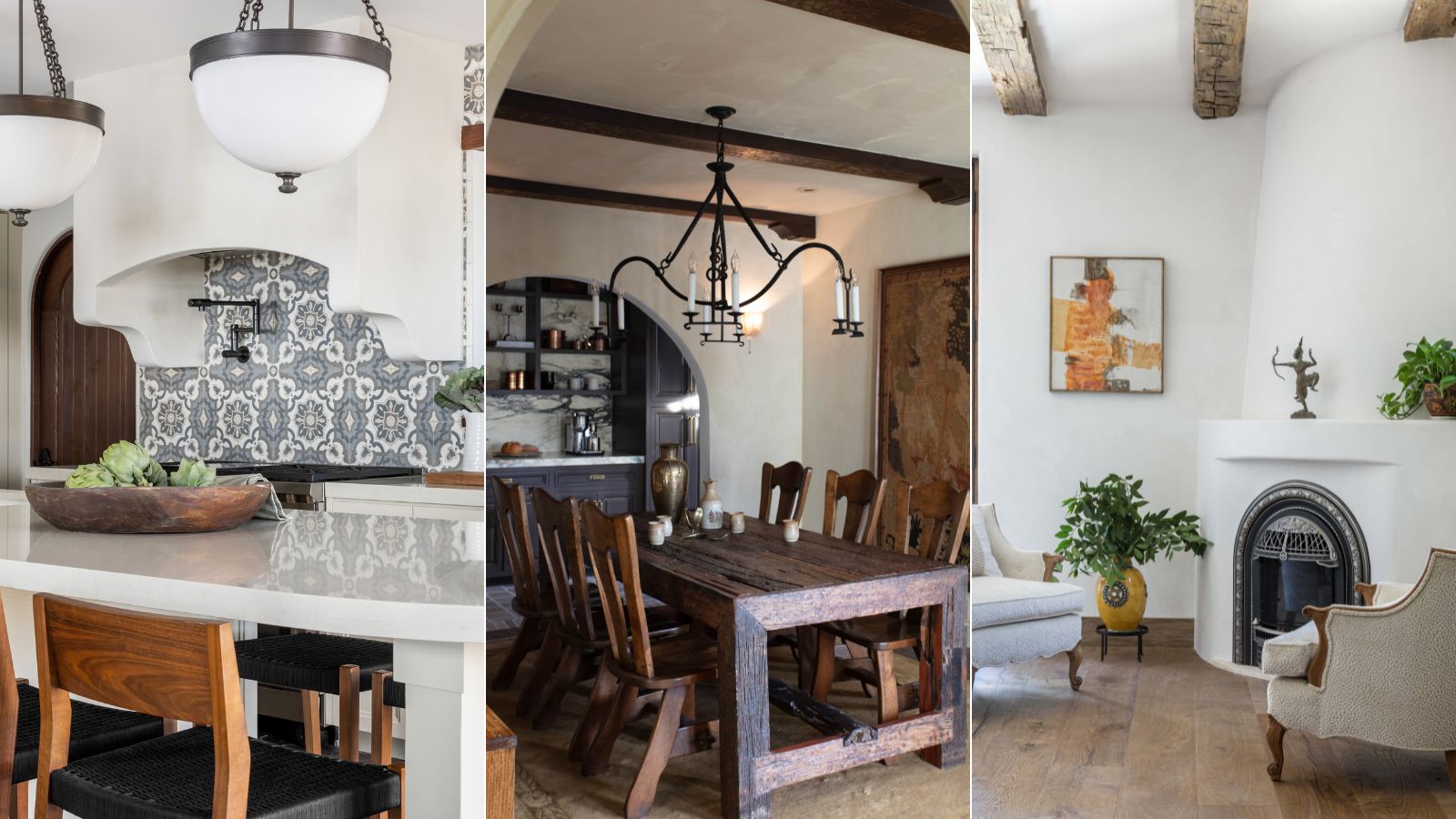

Spanish revival interiors are back in a big way, and they offer the perfect base for pairing old and new. Celebrating Spanish-style homes in a way that pays homage rather than imitates, homes of every style can take inspiration from this enduring scheme.
Interior design styles hailing from European and Mediterranean countries have surged in popularity, and are beginning to dominate trends. Spanish revival is one such style, thanks to its unique architectural details, warming color palette, and ability to blend well with other aesthetics.
Whether you're renovating a Spanish-style home and want to create an authentic scheme, or simply wish to add an essence of the design style into your space, we've asked interior designers to weigh in on the Spanish revival design trend to find out how to tastefully infuse its elements into your home.
What is Spanish revival style?

The Spanish revival style has been surging in popularity, and for good reason. An interior design style that blends old and new and embraces a mix of warm neutrals and bolder hues, it's an aesthetic that works for all manner of tastes. But what is Spanish revival, and where does it hail from?
'Spanish revival interiors are a blend of Spanish colonial and Moorish design elements. The style is characterized by its use of natural materials, including wooden beams, arched passages, plaster walls, rich colors illustrated through tiles and mosaics, intricate details, and a focus on comfort and atmospheres that are timeless and inviting,' explains Kristen Fiore, owner and principal designer at Kristen Elizabeth Design.
This design style celebrates Spanish-style homes and the atmosphere they evoke, as well as the more architectural and decorative details. 'I would describe Spanish revival interiors as a way of bringing life back into traditional Spanish architecture by injecting patterns and textures while considering modern lifestyles and comforts,' says Mollie Ranize, lead interior designer and founder at Dmar Interiors.
'Spanish revival interiors have an underlying sense of coziness about them and usually arrive there by having various lighting sources, comfortable soft goods, subtle patterns sprinkled throughout, and ideally a softly textured wall surface,' she adds.
Why is Spanish revival style trending now?
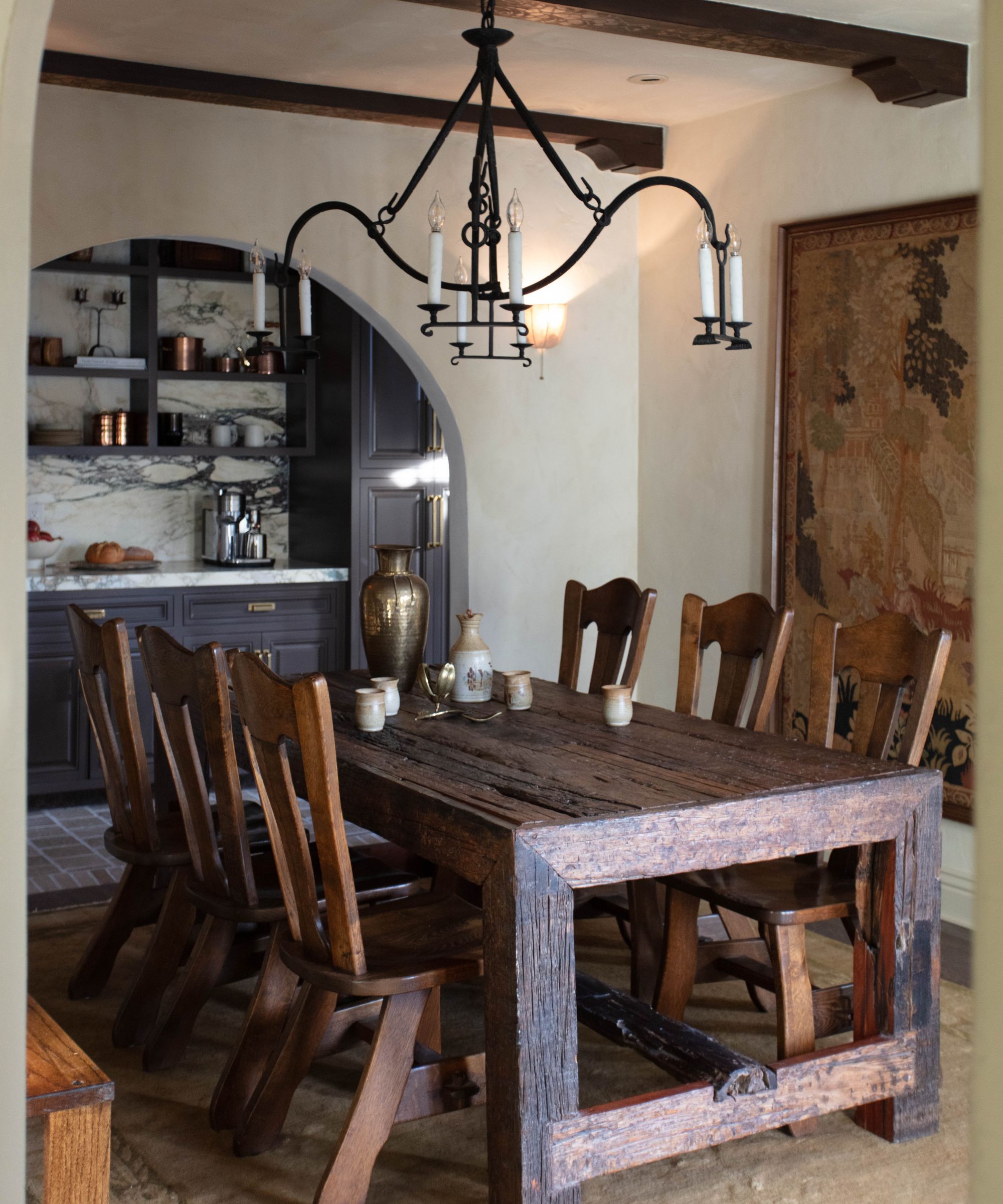
Interior design trends come and go, but Spanish revival seems to be sticking around. 'Here in Southern California, we have so many beautiful and historic Spanish-style homes. This makes sense considering the Spanish presence since the late 1700s,' explains Mollie.
'A lot of these homes have been lovingly cared for and are a bit of a time capsule, while others have been badly updated through the years with various trends. But the bones of these homes are always unique and special and there is an inherent charm to them. I think that people are longing for that feeling of cozy charm in their homes, rather than the feeling you get from large modern boxes,' she adds.
The unique aspect is what's catching the attention of many interior designers. We've seen it in the renewed interest in decorating with vintage and antique pieces that offer a unique, character-filled aspect to our spaces.
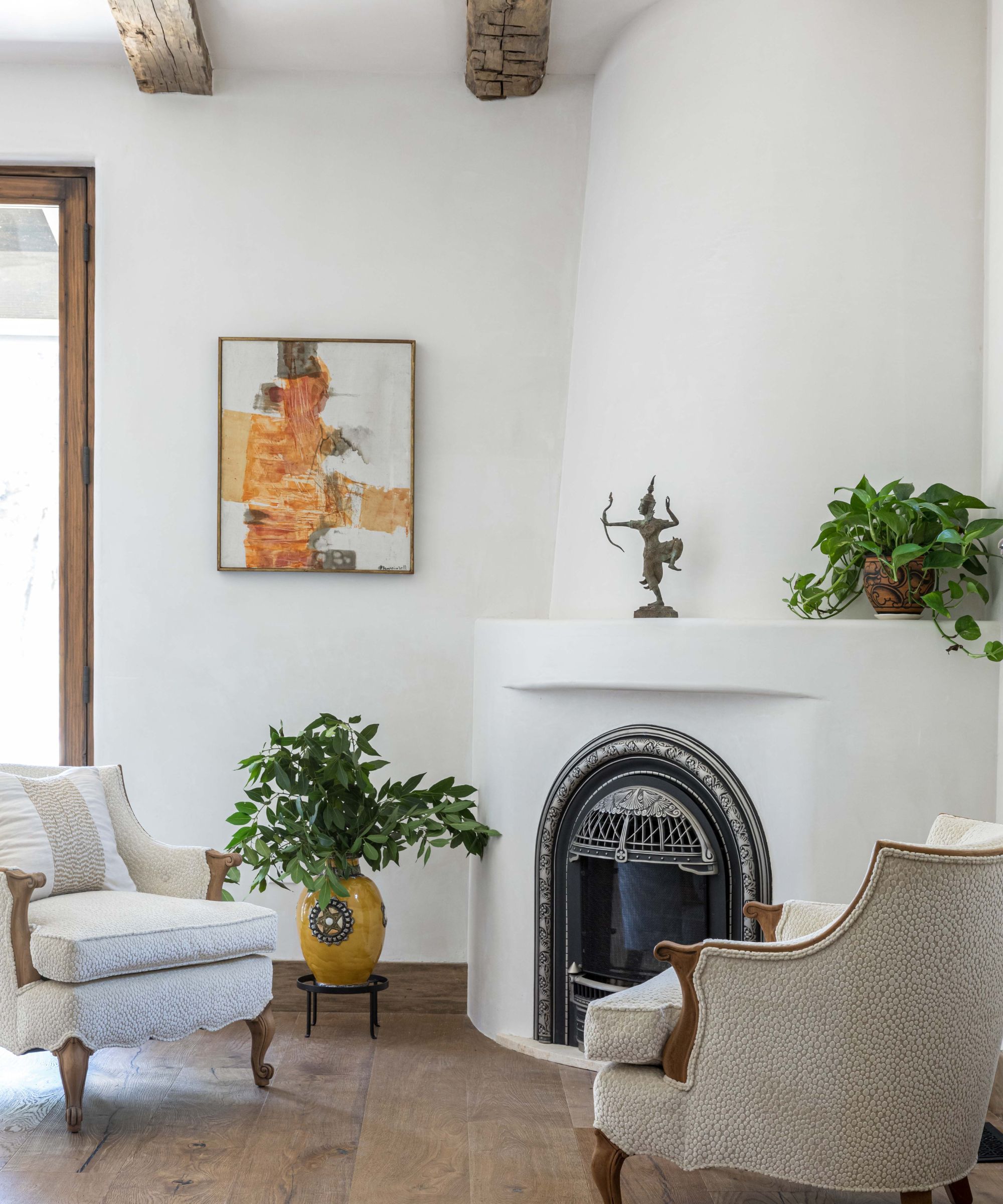
'One-of-a-kind elements are really having a moment and I think that is definitely influencing overall home interiors. In the past, it used to be out with the old, in with the new, but now we're welcoming trends from decades past and really embracing a home's original, charming characteristics,' explains Drew Michael Scott of Lone Fox.
'Spanish revival is especially gaining popularity in Los Angeles because there are so many Spanish-style homes and a lot of buyers in Los Angeles have the money to restore these homes and embrace the original interiors. Trending decor goes hand-in-hand with the type of home that is “having a moment” and a lot of the furniture and decor that is currently on the market has elements of Spanish revival,' Drew adds.
As a design style with so much history and enduring appeal, it's perhaps less a question of whether it's 'on-trend' and rather seeing it as a revived interest and appreciation. Kristen certainly sees it this way, adding, 'I think Spanish revival has never gone out of style. It is a beautiful and classic form of architecture and design that highlights a beautiful blend of bold with simplicity. It will always be desirable.'
How to decorate with Spanish revival style
1. Decorate with an earthy color palette
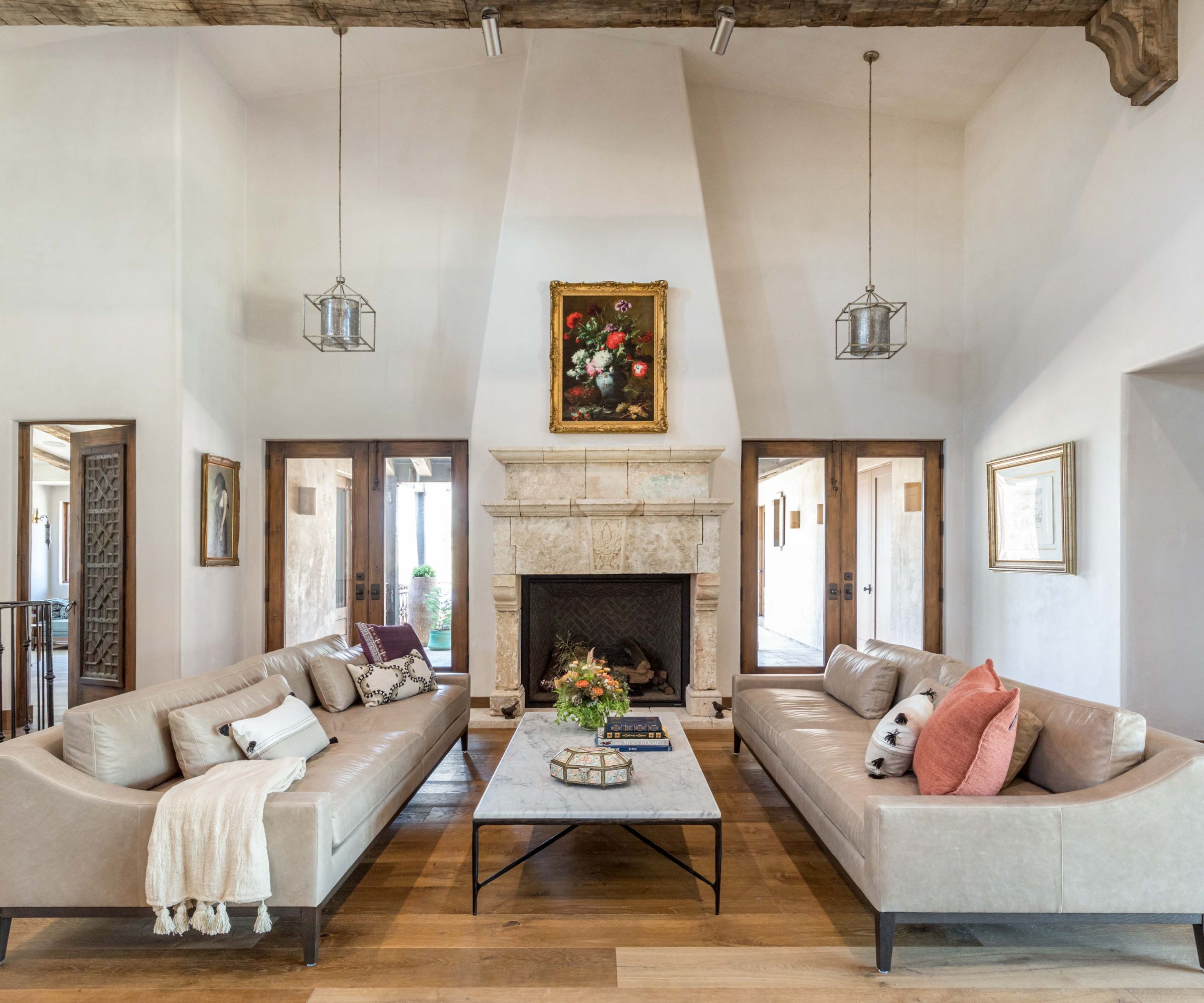
Spanish revival style leans into an earthy color palette – terracotta is one of the most prevalent hues, alongside shades of red, green, brown and orange. 'The terracotta color often seen in Spanish revival roof tiles is a color that feels really natural in Spanish revival interiors,' says Mollie.
Rather than covering every wall in these colors, Kristen suggests taking a more nuanced approach, and taking time to consider the placement of the different colors for an authentic scheme.
'Most Spanish revival architecture and residences rely on earth's palette for their color schemes. The walls are primarily clean and white, always a blank canvas to showcase art. Terracotta is a traditional clay material that acts as a neutral red and often is highlighted in tile flooring,' she explains.
Green hues work beautifully alongside terracotta, so opt for smaller, unexpected features rather than creating a themed room. 'Whenever you can insert a green, in tile or furnishings, it provides a great pop in unexpected places,' says Kristen.
However you choose to introduce color, ensure you decorate in a way that is tailored to both your home and your tastes. 'This can vary from home to home, but within my house, I designed with a lot of red, brown, olive, and cream. I wanted all the rooms to flow but still be unique. Generally, Spanish revival colors include earth tones, terracotta, red, oranges, browns, and whitewashed walls (originally used to keep the home cool),' explains Drew.
2. Mix old and new
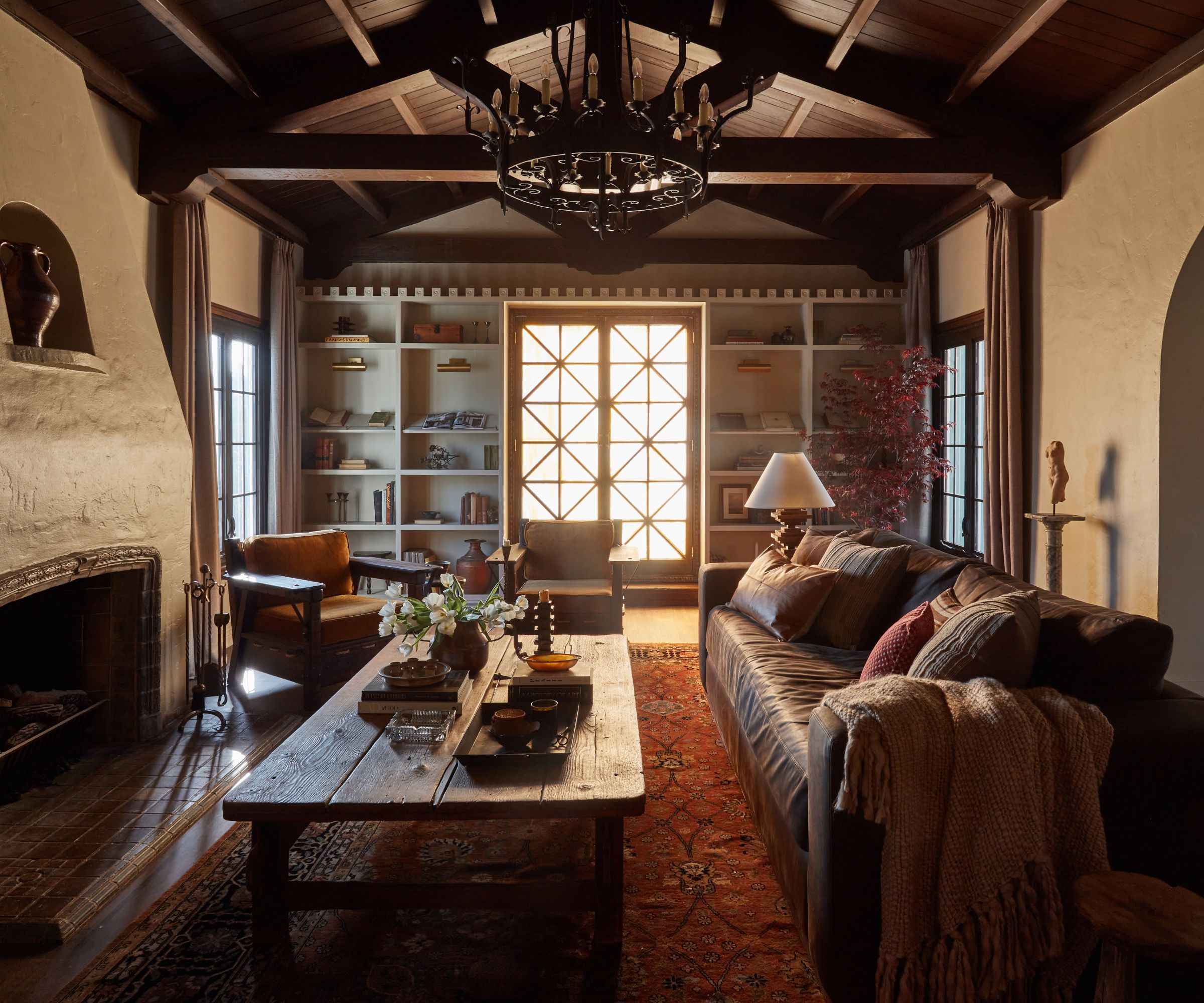
Spanish revival has a longstanding history, and many ties to the past. To ensure your home feels stylish rather than an imitation of the past, introduce a mix of antique and vintage pieces alongside more contemporary additions.
'Upon purchasing my house, keeping the integrity throughout my Spanish-style home was super important to me. I wanted it to feel modern but still embrace the unique elements of the house that make it so special,' explains Drew, who has curated a beautiful collection of antique furniture and decor that creates a truly authentic feel to his home.
'I decorated with a lot of rustic wood pieces, leather, iron, oil paintings, tapestries, distressed pots, statement lighting and sconces, antique rugs, and furniture. Those are important decor pieces to include if you want to stay true to the Spanish revival interior aesthetic,' he advises.
There's no rule when it comes to mixing old and new, but one of the easiest methods is to pair contemporary furniture with antique and vintage decor. 'I love mixing old with new, so I've incorporated a lot of antique decor elements amongst modern furniture pieces. I want guests to feel transported into the world of Lone Fox! My home is my own little castle of collected treasures,' adds Drew.
3. Opt for decor that feels traditional and timeless
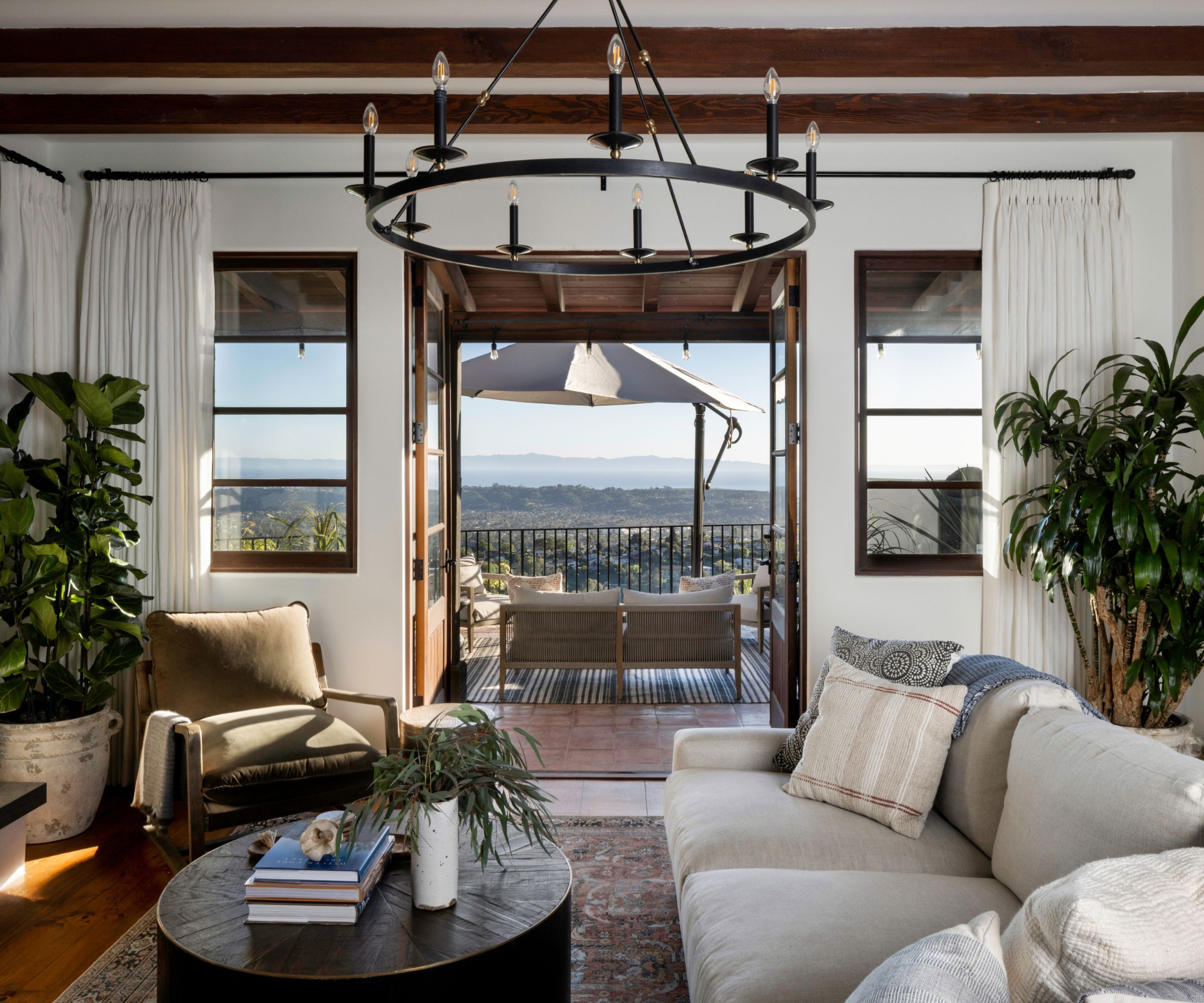
Spanish revival style has age to it, so stick to more traditional styles, materials, and silhouettes when choosing furniture and decor. 'The beauty of Spanish revival is that it is so understated and classic that you can pair almost any style of furnishings inside, but stay away from mixing periods such as Victorian or Art Nouveau,' says Kristen.
'Stick to traditional silhouettes and materials such as shaker or mission, leather, and linen, or go big and mix in modern cozy with highly textured fabrics and patterns. With a Spanish revival home, you can easily blend old with new, so don't be afraid to mix it up,' she adds.
To ensure your space feels current while remaining authentic to the Spanish revival style, stick to easy neutrals when it comes to the larger furniture items – they are bigger investments so opt for something that feels timeless.
'To keep a classic feel in a Spanish revival interior, large surface items like sofas, walls, window treatments are often kept neutral. And when it comes to wood tones, pretty much anything from a mid-tone wood through dark tones feels timeless and chic,' says Mollie.
4. Infuse your personal style

Whenever we talk about interior design trends, we always refer back to infusing your personal style into the scheme. This element is what takes your home from a demonstration of an aesthetic to an authentic home that feels lived in and loved.
'I think something wonderful about a Spanish revival home is that while the architecture should remain true to the style, when it comes to furniture and decor, you can focus a bit more on function and personal style,' says Mollie.
'What makes this style work is not creating an overly thematic space. So bringing in pieces that are comfortable and functional is key. And with decor, anything with a bit of history is a winner. Beyond that, handmade items are key,' she adds.
5. Make a feature of the architecture
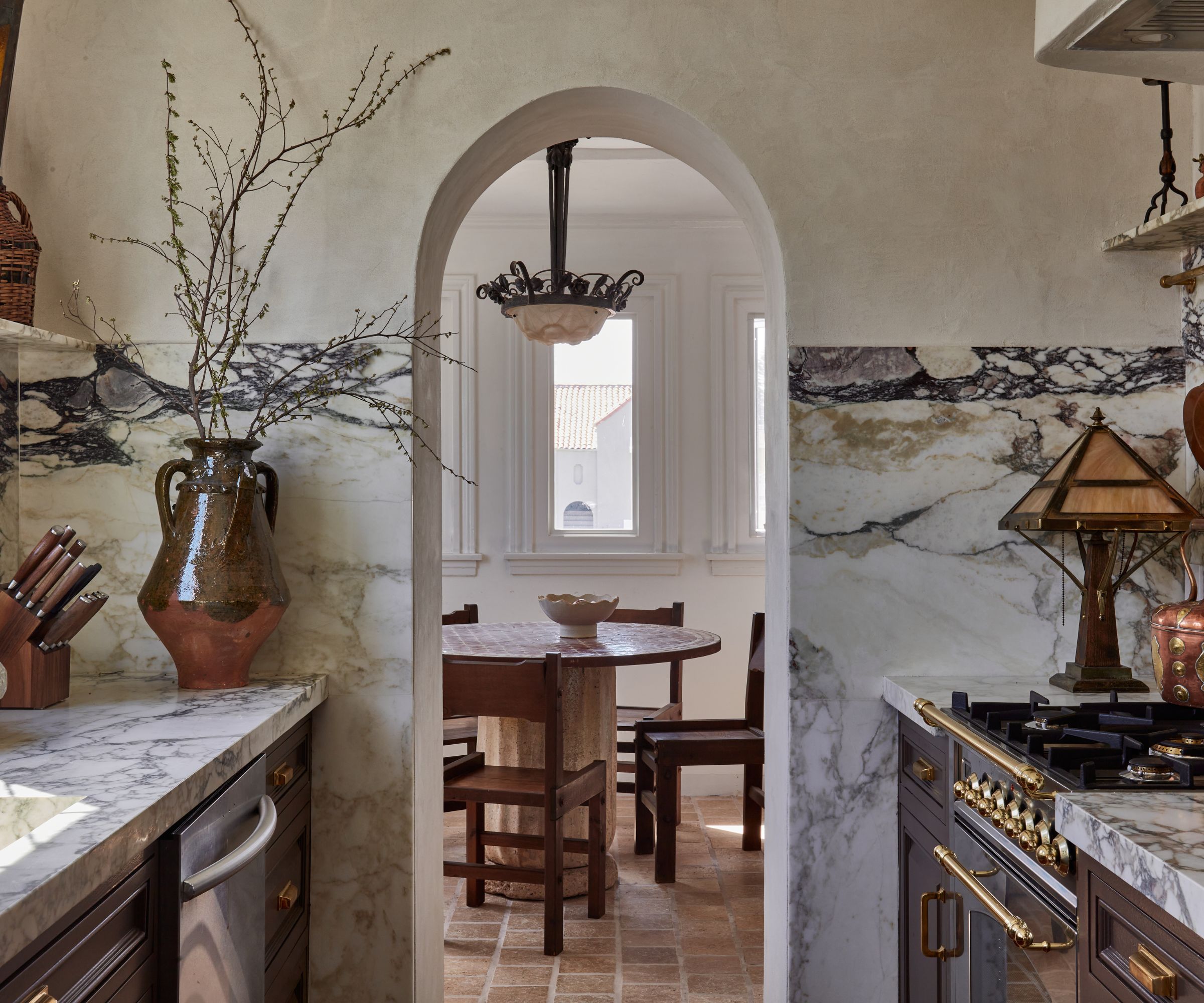
Spanish revival interiors are well known for their unique architectural details – from the terracotta roof tiles to the exposed beams and curved lines, introducing a sense of this character is key to a successful scheme.
'Spanish revival features and embraces the unique style of a Spanish-style home. Think red-tile roofs, arches, coves, tiled bathrooms, hardwood floors and beams, and textured walls,' says Drew.
It's important to keep in mind your home's existing style – adding faux architectural details that don't work with your existing property will leave a scheme feeling lackluster and out of place.
'I always look and listen to the architecture. There are certainly ways to inject this cozy and thoughtful style into a home that doesn't have Spanish architecture, but it will never feel like a true Spanish revival home without the architecture of the space helping out,' explains Mollie.
While you can't add all of these features where they don't already exist, the internal design elements such as arches, hardwood flooring, tiles, and textural walls are all something that can be achieved with some careful consideration.
Consider a lime wash paint on the walls or a beautiful patterned tile in the kitchen. Even small nods to Spanish revival style can add character to your home.
6. Introduce pattern through tiles and upholstery
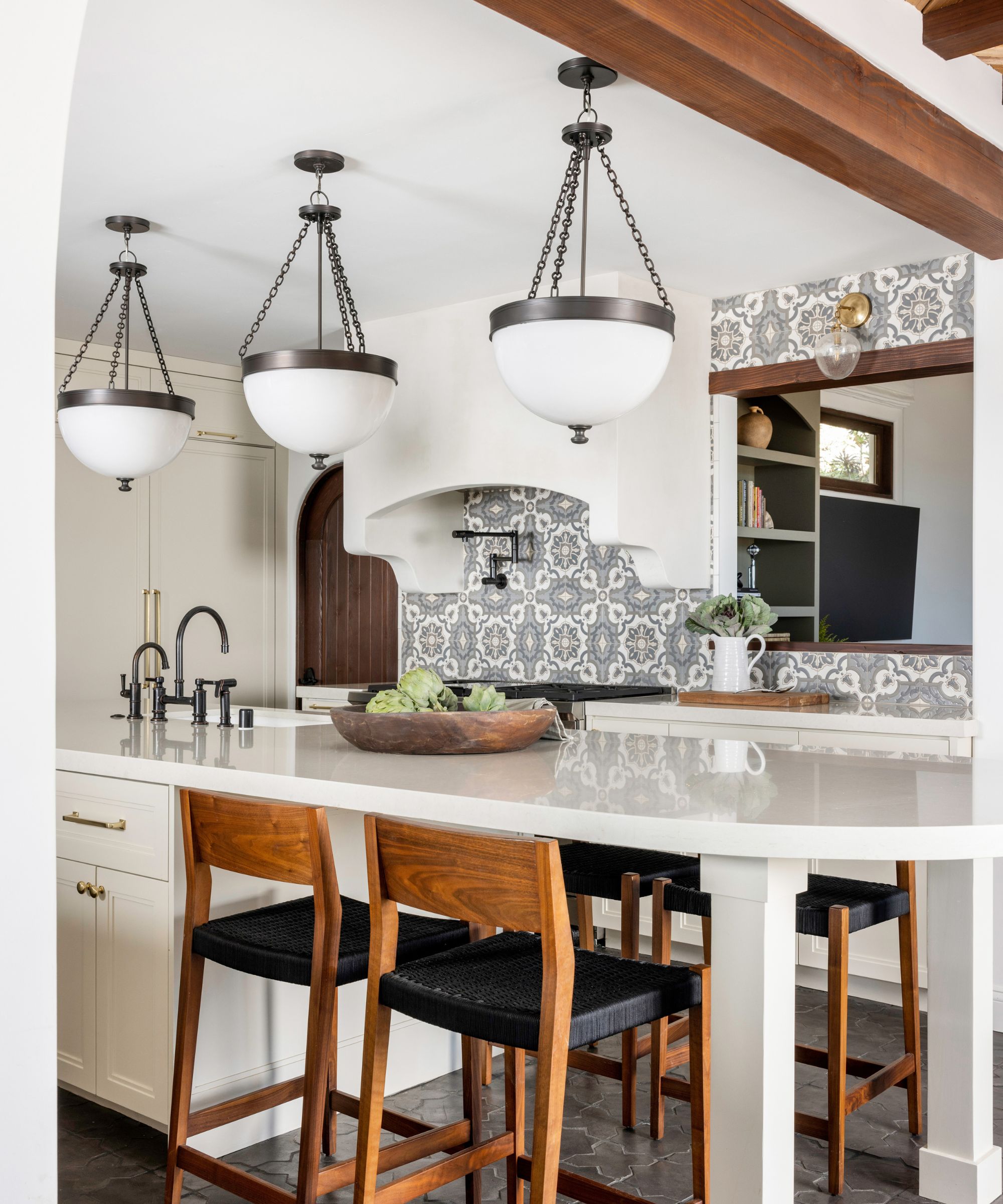
Patterned tiles are one of the most well-known features of Spanish revival interiors, and they're a great way to infuse the style into a home that doesn't architecturally match the aesthetic. Whether you add them in a kitchen, bathroom, or even in a living room, they offer a fun way to introduce color and texture.
'If you love the style, but your architecture does not reflect a classic Spanish revival home, the best way to integrate the design is by adding pattern. Consider backsplashes with a Moorish pattern in tile shapes – think arabesque, or mixed stone mosaics, which are also great for bathroom flooring,' suggests Kristen.
As well as tiles, introducing soft furnishings creates a cohesive feel through every room of the home. Kristen recommends introducing 'patterned textiles in upholstery and pillows that reflect the colors of the earth – dark greens, rich browns, reds and charcoal grays.'
7. Create lots of textural interest
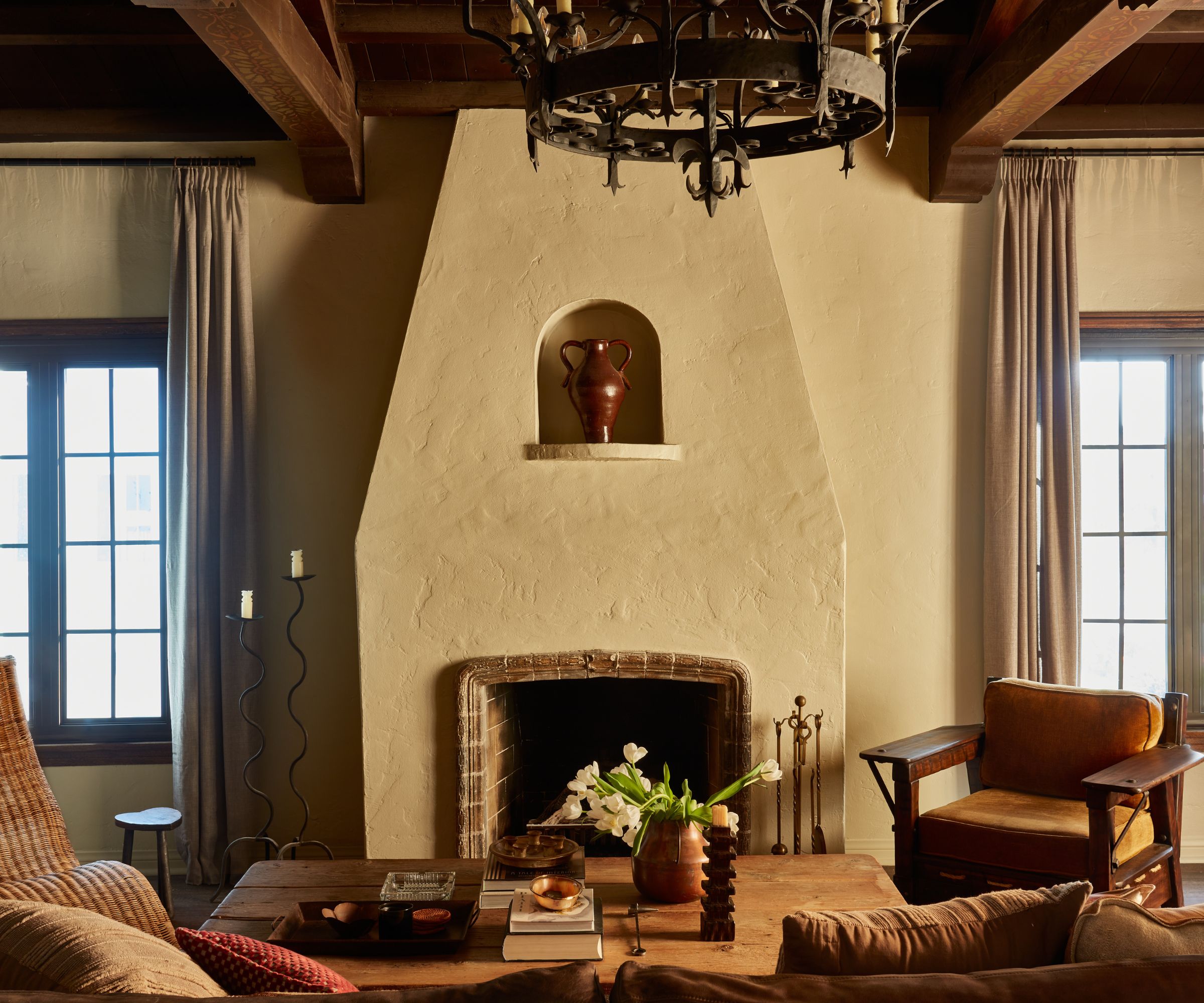
Part of the charm of Spanish-style homes is that they aren't perfect. So many natural materials and textures are used – walls aren't perfectly flat and organic shapes run through schemes. Introducing this textural element to your scheme is a fun way to introduce that sense of character.
'When moving into my house, there were so many preserved historic elements I loved. However, the upstairs bathrooms and kitchen were completely gutted and lacked any charm. It became a fun challenge to bring back that Spanish charm within certain rooms. Paint color and wall texture are a huge starting point. I used lime wash or plaster along with an earth tone color on several walls in my house.' says Drew.
It's not just the bones of the house that benefit from textural interest – decor pieces should also feel lived-in and imperfect, so consider the materials you introduce. 'I sourced so many unique iron lights and sconces to add to the Spanish feel of the home, which highlighted the beams within the living room and dining room areas perfectly,' Drew adds.
With its mix of old and new and traditional architectural details, it's no wonder Spanish revival style has re-found its place in our homes. Whether you're designing an authentic Spanish property or simply want to add some of the design elements that offer a sense of charm, there are plenty of ways to embrace this European design style.
Sign up to the Homes & Gardens newsletter
Design expertise in your inbox – from inspiring decorating ideas and beautiful celebrity homes to practical gardening advice and shopping round-ups.

I’ve worked in the interiors magazine industry for the past five years and joined Homes & Gardens at the beginning of 2024 as the Kitchens & Bathrooms editor. While I love every part of interior design, kitchens and bathrooms are some of the most exciting to design, conceptualize, and write about. There are so many trends, materials, colors, and playful decor elements to explore and experiment with.
-
 5 surprising but brilliant ways to clean with old socks – from perfectly buffing stainless steel to deterring pests naturally and more
5 surprising but brilliant ways to clean with old socks – from perfectly buffing stainless steel to deterring pests naturally and moreTackle dust in tricky corners, clean your mirrors and even banish bad odors with those rogue single socks
By Andy van Terheyden Published
-
 How to grow astilbe – expert advice on cultivating this shade-tolerant flowering perennial
How to grow astilbe – expert advice on cultivating this shade-tolerant flowering perennialShade-tolerant and pest-resistant - astilbe are hardy and tough perennials that can thrive in many settings
By Ellen Wells Published